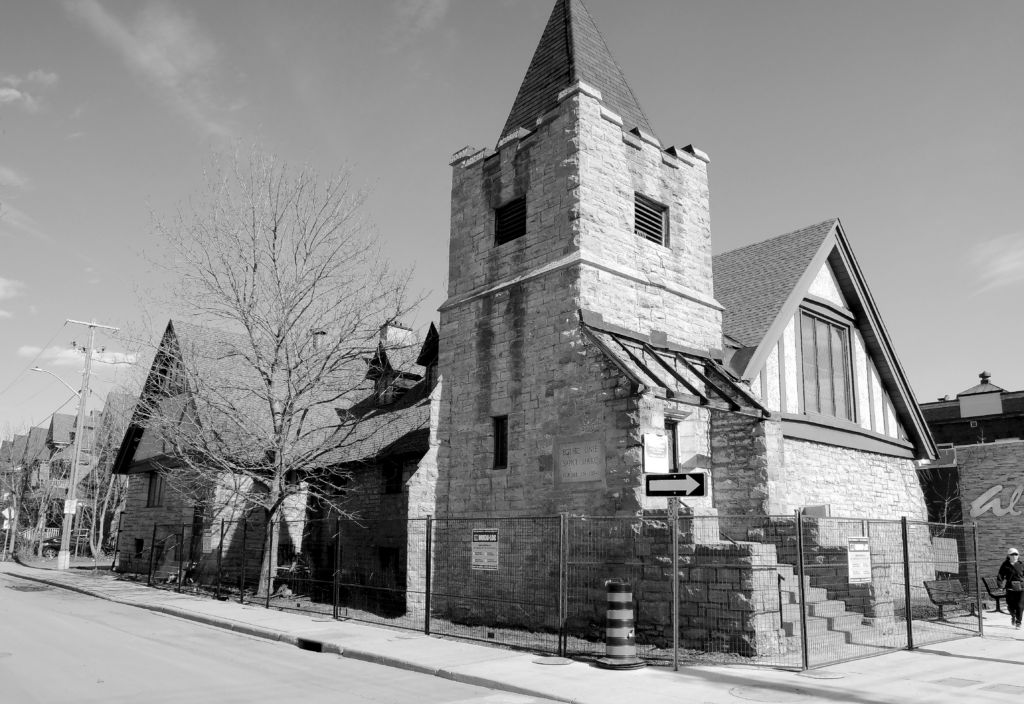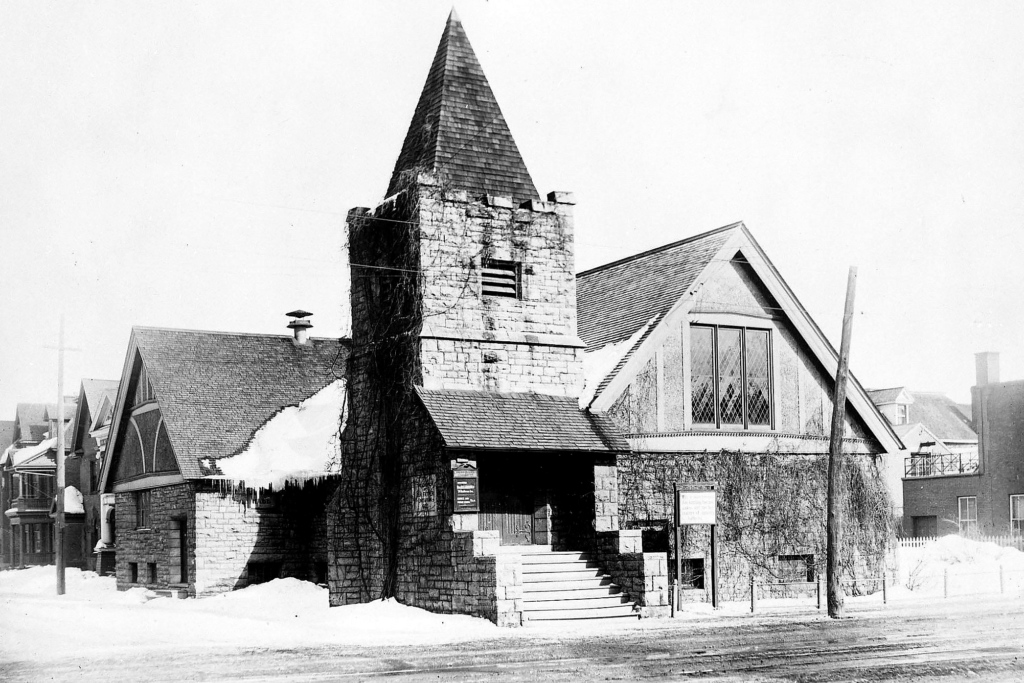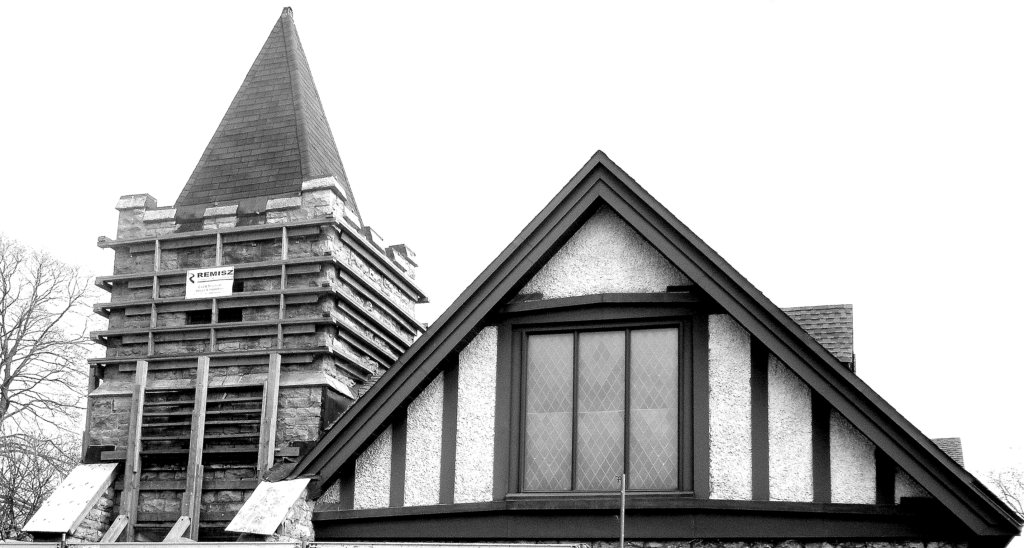Robert Smythe
A catastrophic structural failure is threatening the Eglise Unie St-Marc’s stone tower. After cracks began to appear last year, an investigation revealed that it was in imminent danger of collapse.
Heritage work orders were issued by the city and a building permit to carry out the work was recently granted. Meanwhile, this modest landmark at the corner of Elgin and Lewis Streets has been shored up with heavy timber bracing.
This calls for another investigation into the church’s spiritual foundations. Today, it anchors the southwest corner of the Minto Park Heritage Conservation District. But when it was constructed in 1900, the church was just part of the building fabric of Centretown’s emerging residential community on lower Elgin Street.
First, the Unitarians
The building, first known as the Church of our Father, was erected by the American Unitarian Association. The Unitarians had established an Ottawa outpost operating out of rented halls during the late 1890s. As their membership grew, the search was on for a permanent home and this lot was purchased in 1899. The total cost of the property and the new church building was $8,000, with the funds loaned by American supporters.
It was described as being cozy and constructed in the cottage style similar to other Unitarian churches in New England. The sanctuary’s vaulted interior was deliberately kept free of ornament save for two memorial stained glass windows dedicated to the pastor’s father and a Mr. Holland who had drowned in Britannia Bay.
At the rear, with a separate entrance on Lewis Street, was de Normandie Hall, named for a Unitarian church leader from Boston and used for Sunday school and prayer meetings. As the Ottawa Citizen put it: “This bright and airy room will be rendered doubly cheerful in winter time by a large grate fire that will be kept burning during services.” For a time, the congregation met here while the church proper, which seated some 250-300 worshippers, was being completed. The high well-lit basement contained a public reading room, a dining room, the kitchen and several lavatories.
The Church of our Father was dedicated during a special service on October 28, 1900, with the assistance of “eminent divines” from the American Unitarian Association.
The church flourished in the following decades and, by 1965, the local Unitarians were prepared to make the move into their architecturally stunning new building on Cleary Avenue by the Ottawa River Parkway
Eglise Unie St-Marc pushed out of LeBreton Flats
Luckily, this coincided with the Eglise Unie St-Marc’s need for new quarters once their 656 Wellington Street building had been expropriated for the redevelopment of LeBreton Flats.
This French-speaking institution, descended from the Huguenot sect, bought the property for $147,500 with the settlement they received from the NCC. They planned to spend a further $15,000 on renovations after taking possession on July 1, 1965.
Thereafter, the Unitarian congregation held its services in the Elgin Street Public School gym until their new west end church was finished.
In the early 1970s, St-Marc’s Church hall was leased to Counterpoint, an alternative school run by parents dissatisfied with public education. The lower level was used by a variety of coffee houses, musical performance and gathering venues favoured by the counterculture generation. St-Marc’s is now home to a diverse congregation from many parts of the world.

Tower repairs typical
The church’s current structural problems are typical for historic churches. Towers are the heaviest part of the building, and construction material flaws or sinking foundations frequently call for their repairs or removal. Many of Ottawa’s old churches have been shorn of their towers and belfries.
Thankfully, St-Marc’s is being spared from that amputation and, with some new underpinning, its small but mighty square tower will continue to be a monument to our neighbourhood history.


